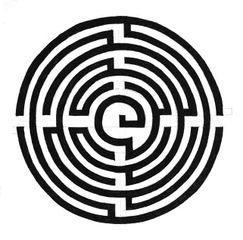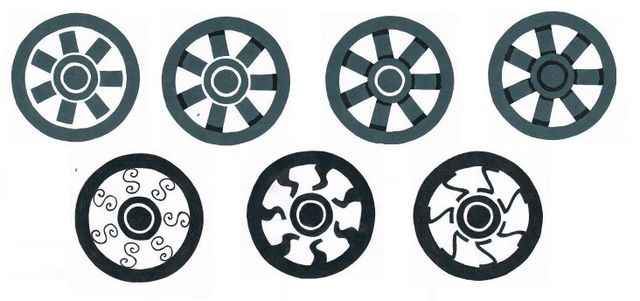Symbols of the Way
The Way of Virtue
The Way of Virtue has several symbols to represent it across the Empire, but there are two that are widely used by the Imperial Synod, and priests of the Way may have items or regalia marked by such symbols.
- The Seven-Spoked Wheel – The wheel is a symbol of the journey that each spirit must make and each of the spokes represents one of the Virtues all of which converge on a single point, that of rebirth.
- The Labyrinth of Ages – The Labyrinth is depicted in a number of ways, but usually within a circle. Most designs favour seven co-centric circles or other elements to represent the seven virtues. Some symbols represent a labyrinth with only one path through from the outside to the centre, while others favour a labyrinth with multiple routes, depending on the attitude of the artist to the virtues.
As the Way is concerned with the journey of the spirit from birth-to-death-to-rebirth, some priests and pilgrims carry or adorn themselves with items and regalia of travel. For instance, it is not uncommon for Priests and Pilgrims to carry a staff as a symbol of safety and stability whilst traveling.
The Paths of Virtue
There are a great many symbols associated with the individual Virtues. Many are drawn from well-known stories or parables about the virtue, while others are associated with long-held traditions such as the bird imagery of Wintermark, the virtuous animals of Varushka, or even the magical runes said to have an association with each virtue.
Priests of Pride teach that the best symbol of the virtue is the open display of whatever it is that the pilgrim is most proud of. The flag and the banner are ways of displaying such symbols, as is the livery of a Marcher household, or the heraldry of a noble or Noble house in Dawn.
As a more unified symbol of the virtue itself, rather than of the individual's personal Pride, the Imperial Synod often favours the sun. The sun shines brightly, without shame, open for all the world to see. By so doing, it allows others to see as well - and while it may occasionally be occluded by clouds, when the clouds pass the sun's light is undiminished.
In Wintermark, the eagle, the heron, and the swan all symbolise Pride. The eagle is also a popular symbol of the virtue in Varushka where it is joined by the deer. Some magicians use the rune of Majesty, Feresh, which represents glorious splendour, to symbolise Pride. These magicians point to the way that Feresh only enhances attributes that are already present as a particularly telling parable about the nature of Pride.
During their Spring festival, the Urizen represent the virtue of Pride with pink blossoms.

